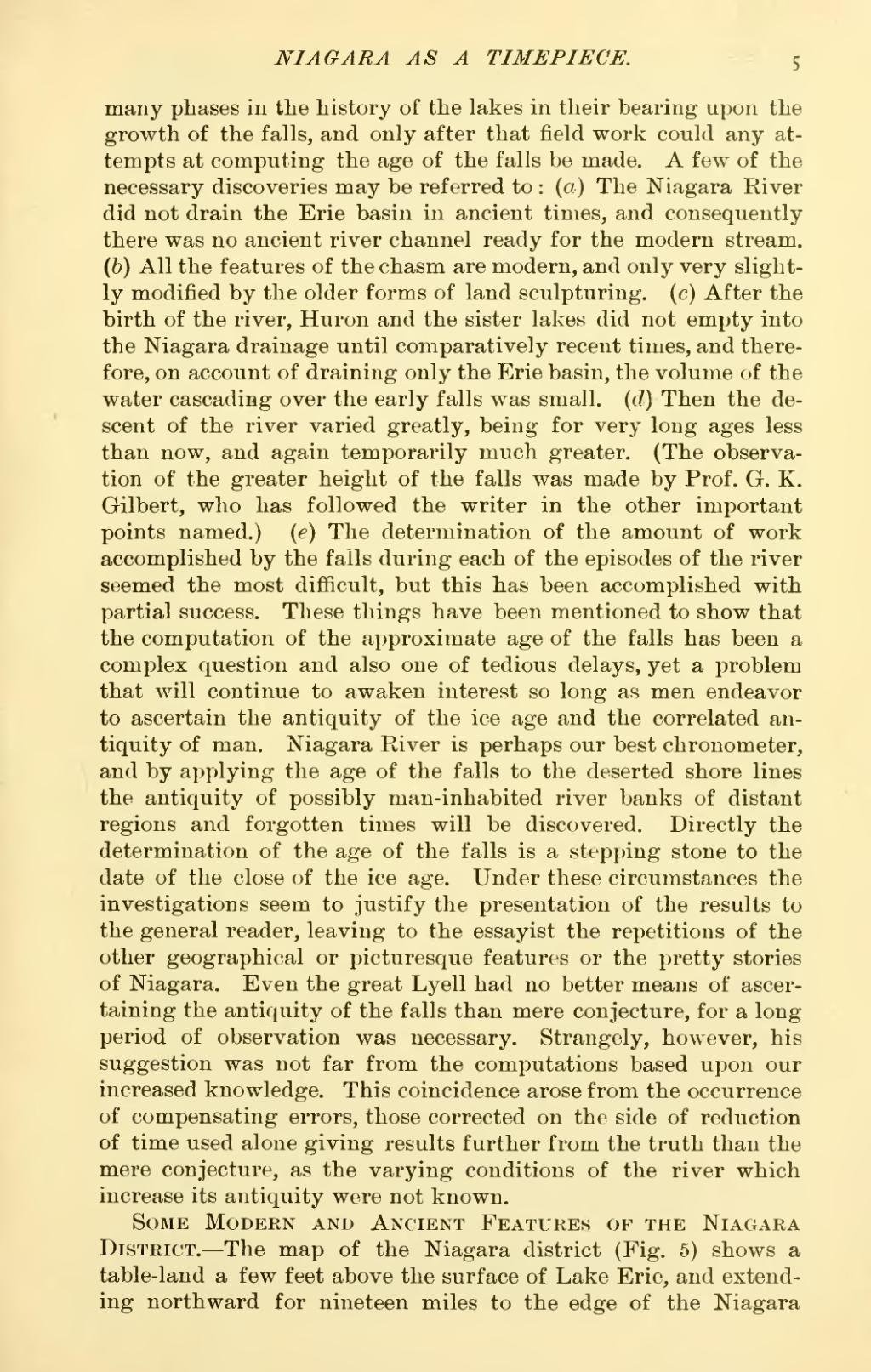many phases in the history of the lakes in their bearing upon the growth of the falls, and only after that field work could any attempts at computing the age of the falls be made. A few of the necessary discoveries may be referred to: (a) The Niagara River did not drain the Erie basin in ancient times, and consequently there was no ancient river channel ready for the modern stream. (b) All the features of the chasm are modern, and only very slightly modified by the older forms of land sculpturing, (c) After the birth of the river, Huron and the sister lakes did not empty into the Niagara drainage until comparatively recent times, and therefore, on account of draining only the Erie basin, the volume of the water cascading over the early falls was small. (d) Then the descent of the river varied greatly, being for very long ages less than now, and again temporarily much greater. (The observation of the greater height of the falls was made by Prof. G. K. Gilbert, who has followed the writer in the other important points named.) (e) The determination of the amount of work accomplished by the falls during each of the episodes of the river seemed the most difficult, but this has been accomplished with partial success. These things have been mentioned to show that the computation of the approximate age of the falls has been a complex question and also one of tedious delays, yet a problem that will continue to awaken interest so long as men endeavor to ascertain the antiquity of the ice age and the correlated antiquity of man. Niagara River is perhaps our best chronometer, and by applying the age of the falls to the deserted shore lines the antiquity of possibly man-inhabited river banks of distant regions and forgotten times will be discovered. Directly the determination of the age of the falls is a stepping stone to the date of the close of the ice age. Under these circumstances the investigations seem to justify the presentation of the results to the general reader, leaving to the essayist the repetitions of the other geographical or picturesque features or the pretty stories of Niagara. Even the great Lyell had no better means of ascertaining the antiquity of the falls than mere conjecture, for a long period of observation was necessary. Strangely, however, his suggestion was not far from the computations based upon our increased knowledge. This coincidence arose from the occurrence of compensating errors, those corrected on the side of reduction of time used alone giving results further from the truth than the mere conjecture, as the varying conditions of the river which increase its antiquity were not known.
Some Modern and Ancient Features of the Niagara District.—The map of the Niagara district (Fig. 5) shows a table-land a few feet above the surface of Lake Erie, and extending northward for nineteen miles to the edge of the Niagara
